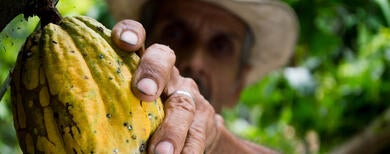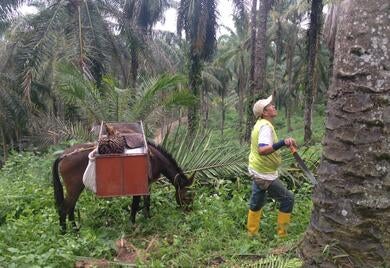
A New Generation of Thematic Bonds Combines Joint-Issuances and the Power of Securitizations
An innovative structured finance program in Mexico supports and brings together small financial intermediaries in agriculture and MSMEs lending, enhances access to capital markets and promotes sustainability.

Superfoods also take care of Amazonia’s health
The development of sustainable value chains for quinoa, cocoa, sesame, and other high-nutritional-value crops can foster integration into international markets, benefit the region, and contribute to sustainable development goals.

Why is there growing demand for Central American cocoa?
In pre-Columbian times, cocoa was a commodity so valuable it was used as a currency. In Mesoamerica, where it has been consumed for millennia, the Aztecs paid for everyday items in cocoa beans. Three would buy you a turkey egg, one hundred a whole hen.

How cattle ranchers can profit from planting trees
In agriculture it’s not often that you find a relatively simple way to increase production by up to 20%. Planting trees turns out to be one such way for cattle farmers. Cows like shade and grow much faster if they graze on pastures dotted with trees. Studies show that combining livestock herding and forestry on the same stretch of land can lead to an 8% to 20% increase in dairy and meat production in the Southern Cone region.

Four Ways to Get the Most out of Palm Oil in Latin America and the Caribbean
What do soap, Ben and Jerry’s, and KitKat bars have in common? They all contain palm oil, an oil produced by the oil palm tree. Indonesia and Malaysia produce the vast majority of the world’s supply and have experienced significant environmental consequences as a result. Now the crop’s profitability is attracting interest in other tropical climates, including Latin America and the Caribbean.

Six Takeaways on the Growth of Palm Oil in Latin America
As I have noted before in this space, there are a number of risks and opportunities associated with palm oil. Among other negative impacts, expansion of palm oil plantations drives deforestation in many tropical countries, resulting in enormous carbon emissions. However, palm oil’s high productivity makes it a profitable investment and it has the potential to bring wealth and employment to rural areas.